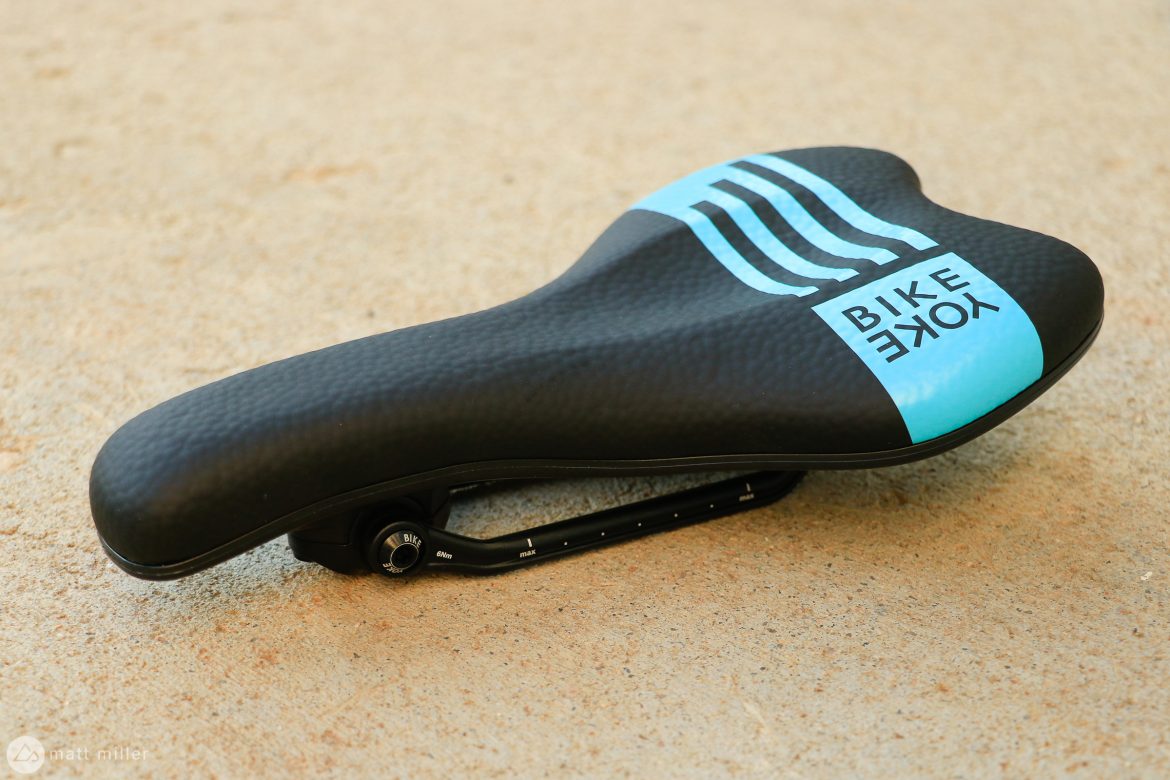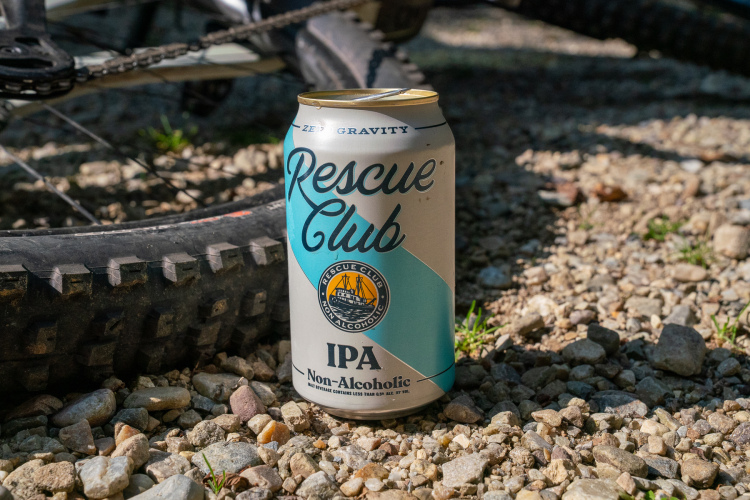
It’s usually not the saddle that garners attention on a bike, but the Bike Yoke Sagma has snagged some eyes while mounted on my bike over the past few months. Maybe it’s the broad shape of the saddle, the bright blue Bike Yoke logo emblazoned across the width of it, or the fact that it wiggles from side to side. Either way, it stands out at least a little more than the average saddle and it does have some tricks up its sleeve to justify the attention.
The Sagma has ovalized aluminum rails with a suspension design that utilizes shock absorbers for a bit of damping technology under the derriere. It is available in two sizes: 130mm and 142mm, basically narrow and wide, and has a carbon reinforced nylon shell. The weights on both sizes are 225g and 227g respectively. The Sagma is available in five colors and includes two regular shock absorbers, and one soft and one hard shock absorber.
Though saddles are personal, Bike Yoke says that the Sagma can fit a wider field of riders more comfortably because of its design and short length. Bike Yoke recommends the more narrow saddle for people who are riding gravity disciplines because of the clearance, but for most people considering the saddle, the decision might best be made based off of sit bone widths.
With the design and the shock absorbers, the saddle absorbs vertical impact and vibration and it also twists laterally. Bike Yoke says the design can actually increase power transmission and it may be easier on the joints since the saddle moves with the rider’s hips and legs. The foam is made from what Bike Yoke calls Innovative Low Speed Rebound Beads, which supposedly filter and reduce vibrations, mold to body shape, and reduce pressure in sensitive areas.
Installation is about as simple as any other saddle, but swapping the shock absorbers takes a few extra minutes. It’s much easier to do this with the saddle completely off of the post so you have more access to the two bolts on either side of the shock absorbers.

I started my review with the two regular hardness absorbers installed and then swapped the rear absorber for a softer one. With the two regular absorbers installed, I mounted the Sagma saddle on Bike Yoke’s trusty Revive 2.0 dropper post and noticed the mild amount of flex that the Sagma has.
How much shock can the Sagma really absorb? This is a good question. The lateral flex of the Sagma saddle is immediately apparent, especially with the soft absorber installed. The left or right side of the saddle moves up or down probably a half-inch from a horizontal plane and seems to give the legs a better space to move during pedaling. Generating power from a seated position and winding through singletrack, up and over rocks and around corners is where this flex seems to come in handy, though some might find it’s too much movement for them with the soft absorber installed.
It’s hard to say how much damping the shock absorbers do vertically, however. Since even a little bit of pressure on the saddle can compress the rear shock and the tire, it was harder to get a feel for this, though I’m certain it’s more apparent on a hardtail, and I have had hardtail riders express interest in the saddle.
I’ve had some long days aboard the Sagma saddle though and I really loved my wide and stubby Velo Senso Wilson saddle with a similar profile, but the added comfort from the Sagma has kept my interest. The saddle has been mounted to my bike for the entirety of the summer and is still in great shape. The cover material allows for smooth movement over the saddle and it has stood up fine to scuffs and rock knocks.

I did experience some creaking when I initially installed the saddle and asked the folks at Bike Yoke what they thought it might be. I greased the absorbers and applied some more Loctite to the saddle/shock absorber bolts and reinstalled everything to their torque spec, only to find the creak again. Bike Yoke suggested it may be an interface or “system” issue, so I kept tightening the saddle/post bolts on the mated Bike Yoke Revive dropper post. The torque spec here is 7nM and this is one torque spec I have never paid much attention to because all of my saddles in recent years have had aluminum rails, but getting them to spec this time did the trick and the creak disappeared.
Closing thoughts
For $140 (available at Amazon and other online retailers), this is definitely not the most affordable saddle, but for anyone who has had a picky or delicate rear end, or wants something a little more forgiving on their hardtail, the Bike Yoke Sagma is a great option. The regular hardness absorbers are likely enough movement for a lot of people, but the extras give the buyer some room for experimentation and optimization.
⭐️ The Bike Yoke Sagma saddle is available at Amazon and other online retailers.
Party laps
- Takes the edge off harsh saddle time
- Different absorbers and widths offer buyer great personalization
Pros and cons of the Bike Yoke Sagma saddle.
Dirt naps
- Pricey









0 Comments